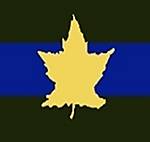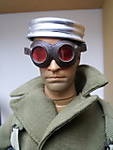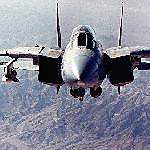I feel compelled to throw in a few of my own observations, for whatever they are worth.
Quoted Text
Yes, the Sherman was under-gunned and under-armored.
There is some question as to whether or not 'a bit more armor' would have been more or less beneficial. Generally speaking, whatever was met that the 93mm effective (give or take) of Sherman's armor could not stop could not be stopped by 110mm or 120mm. By the time you start armoring to levels which are actually effective against what the Germans were fielding (eg 180mm Jumbo levels), you start to dramatically affect the other features of the tank which means you may have over-armored it. The reverse can be said for the gun. Just how often was something encountered on the battlefield which the 76mm could not deal with reliably, but the 17pr could? I've gone over that in some of my articles, the answer is, in practice, 'not much.'
Quoted Text
The Sherman, and indeed all American Tanks up to the M26, which didn't see action until the last few weeks of the war in Europe in 1945, were supposed to be used as "Breakthrough" vehicles, in SUPPORT of US Infantry, according to US ARMY doctrine during WWII, and was NOT to be used in "Armor vs. Armor" engagements. The Sherman's whole concept and design was centered around this flawed doctrine
.
I take some exception to this statement. That at the operational level Sherman was designed to be an exploitation vehicle did not mean that at the tactical level the tank was not designed to be able to take on pretty much anything it encountered. There is plenty of evidence that it was indeed so designed. (That designed intent did not always match with battlefield reality is another matter entirely). The only anti-tank-related thing which, by doctrine, tanks were not supposed to do was to react to massed enemy armored attacks, that's the reason Tank Destroyers, a purely reactionary organisation, existed. But even at that, by 1944 the tank destroyer doctrine accepted that Shermans could do a pretty good job of dealing with enemy armored attacks on their own, with FM 18-5 stating that an armored division may decide not to call upon the tank destroyers, which could be asked to continue their secondary duties of indirect fire and bunker-busting, even though this wasn't considered ideal.
Quoted Text
Also: We could have had the M26 (90mm Main Gun) in service by early Autumn of 1944, had not the Army Ground Forces and Ordnance Department, supported by General Leslie McNair, put the M26 on the back burner. This establishment INSISTED on a separate, dedicated Tank Destroyer Force, and the misbegotten doctrine of designing a Tank (the M4) around the Infantry Support Mission, resulting in many needless casualties and deaths. THAT was the REAL SCANDAL...
Also a debateable statement. I've a couple of articles/timelines up of the Pershing development process from both the viewpoint of Ordnance Branch....
http://worldoftanks.com/en/news/21/The_Chieftains_Hatch_Pershing_1/http://worldoftanks.com/en/news/21/The_Chieftains_Hatch_Pershing_2/http://worldoftanks.com/en/news/pc-browser/21/The_Cheiftains_Hatch_Zebra/and the view of AGF
http://worldoftanks.com/en/news/pc-browser/21/The_Chieftains_Hatch_Equipping_The_Force/http://worldoftanks.com/en/news/pc-browser/21/The_Chieftains_Hatch_Equipping_2/http://worldoftanks.com/en/news/pc-browser/21/The_Chieftains_Hatch_Equipping_The_Force_pt3/http://worldoftanks.com/en/news/pc-browser/21/The_Chieftains_Hatch_Equipping_The_Force_pt4/http://worldoftanks.com/en/news/pc-browser/21/The_Chieftains_Hatch_Equipping_The_Force_pt5/These are pretty much copy/pastes of the documents I found in the Archives, with some interpretation of my own either in specifically clear square bracket notes, or at the end.
The takeaway I got from this was that although AGF wasn't particularly enamoured of the T26/90mm combination, they didn't actually stop Ordnance from tinkering and developing the system. Given that T26's reliability was never, even in the E3 / M26 configuration, entirely solved, one can certainly question the merit of putting into production the T26E1, the tank available in Autumn 1944, which was soundly rejected by Armored Force as being Not Battleworthy. The only appreciable delay caused by AGF seems to have been a matter of two months or so on the concept of mass production, and one must inquire as to what would have actually been produced in November of 1944 when the January 1945 production was still not entirely up to par.
With respect to the 90mm in general, Baily's "Faint Praise" matches my opinion that there wasn't an option even of putting the Pershing turret on M4 as an exigency while the T26's automotive problems were being worked on. (Similar to how M47 was a T42 turret plonked onto an M46 hull). However, we differ as to the reason. I can't recall his argument, but according to the minutes I found in the Archives of an Armored Board meeting, the head of Ordnance R&D (Barnes), the backlog was actually production of the 90mm tubes. This meeting took place May 1944, the full minutes are available here.
http://worldoftanks.com/en/news/pc-browser/21/The_chieftains_Hatch_90mm/If Baily saw that minute, I don't know.
Quoted Text
It's worth noting that even when the 76 MM armed tanks they were left behind in the UK during D-Day because no one wanted them. Even then in the fairly limited US tank on tank fighting coming out of the Summer of 1944, while there was a press for a better gun, and then even a better gun on top of the 76 MM that existed it took the Bulge for the myth of the Sherman as utterly useless to start.
Fully agreed.
Some operator opinions throughout the European campaign in the various phases are here.
http://worldoftanks.com/en/news/21/us-guns-german-armor-part-2/[quote]
Quoted Text
I have to ask one question: If American Sherman crews had to laden their tanks with sand bag armor and logs, how much faith in the design to thwart German tanks and German antitank guns did they really have?
Not enough. Note that their faith was misplaced, the sandbags and logs etc generally did more harm than good. Although there were occasional cases of German vehicles with concrete or logs on their own, you have correctly noted that it was not a common practice. The reason for this is that the engineers on both sides of the Atlantic had come to the same conclusion: Stop putting extra weight on your vehicles which doesn't actually help and just wears out your vehicles, and in some cases, makes it easier to be penetrated. The difference is that the Germans actually followed the advice of their engineers, the Americans generally didn't. Although, to his credit, Patton was well known for enforcing it. There's a photo of his angrily storming away from a Sherman crew who had put lots of sandbags on their vehicle.
A ten-minute discussion on additional and improvised armor with a panel including Zaloga, Yeide and Doyle here.
https://youtu.be/Jtl2DhoRPnc?t=15 (First ten minutes or so of the video).
Quoted Text
2. By mid-war, these, and other German Tanks were equipped with... MANUAL Turret Traversing Gear ONLY!
It took 3 men and a boy to turn that Manual Traversing Gear in order to Traverse their HEAVY Panther or Tiger Turret if their Tank was not on level terrain. Conversely, a Sherman Crew could (and did) Traverse their Turret comparatively easily, not only with their powered Electric/Hydro-mechanical Traverse mechanism, but MANUALLY as well. Sure, on an incline of nearly any kind, the Shermans' powered Traverse Systems performed quite well, and much faster than the German Tanks' systems, especially in the horizontal plane. If the powered system was down for one reason or another, the manual system was of course, quite a bit slower, but not impossible to operate on an incline or in rough or hilly terrain.
From where are you getting this incorrect information? It is easily countered by noting that only the last model, simplified, Panzer IVs went without powered traverse. Not disputing that Sherman's traverse system was better, but let's at least be correct about it.
Quoted Text
The Sherman really wasn't developed much further until AFTER the American debacle at Kasserine, where the inadequacies of the Sherman's Armor and Main Gun became readily apparent.
This is a little bit off-base. It wasn't developed not for a lack of will, but for a lack of acceptable equipment. Bear in mind that the 76mm Sherman had actually been approved in mid '42 and a thousand ordered with the intent of bringing a number of them along on the invasion of North Africa (Torch). This order was stopped by Armored Force, who basically pointed out to Ordnance "Yeah, sure, you crammed a 76mm into this thing and mechanically it works, but you Ordnance guys don't have to try to use it!" It took about a year before Ordnance was able to create a more acceptable design, which we now know as the E6 with the T23 turret. It is also worth noting that if Armored Force rejected the small turret with the relatively small 76mm gun as being too cramped, you can imagine what they would have thought of the same small turret with the much larger 17pr gun in it.
Quoted Text
A better-armored and better-armed US Tank, (and I include the Sherman in this observation), could have saved American and Allied Tankers' lives and might have prevented many casualties within these various Armored organizations
How many, though? Armored Force lost about 1,500 men killed in the war. The entire war, from North Africa to Okinawa, Bataan to Berlin, from Stuarts to Pershings, due to tanks, artillery, snipers, traffic accidents, or getting run over when out of the tank. Since Armored Force didn't have officers, we'll add a number to that. Let's also add in a few clerks and typists etc thrown into the BOG's hatch. Heck, let's triple the number, to less than 5,000. I haven't seen the figures, but would anyone care to take a bet that the Panzerwaffe didn't lose as many troops as that, even with their Panthers and King Tigers? The 'death-trap-ness' of the M4 is hugely overrated. I intereviewed one old tanker two weeks ago, he said "Sherman was wonderful. It kept me safe"
Quoted Text
I'll repeat it again. Air to ground claims must be verified. The German ground attack aircraft regularly "destroyed" more Soviet tanks in one battle than were available on an entire front. The same applied for US, Soviet, UK and all ground attack claims. If you compare kills claimed, to wartime logs of the units attacked there is a vast gap.
It's also worth pointing out that Germans and Soviets both had dedicated, designed-from-scratch, ground attack aircraft. The US and UK used re-purposed fighters, though I guess an exception might be made for Mosquito. It would be expected that even if not inflated, German and Soviet kills by air should be higher.
Quoted Text
I agree that the 17pdr. could have made a big difference. Why wasn't it done? Politics. The 17pdr. wasn't "American-made", and sticking a British-made Gun in an American Tank stung some select-few American Generals' vanity- Patton was one of them- BUT! Patton honestly also felt that re-designing the American Shermans to carry the very successful British 17pdr. would disrupt the flow of Shermans to his 3rd Army, due to the lost time in so adapting "his" Tanks. Let's face it- British Fireflies equipped with the 17pdr. were pretty darned successful against German Armor. What couldn't American Shermans have accomplished if they had been produced en masse with the British 17pdrs..?
Politics has nothing to do with it. The US never showed a reluctance to use British equipment 'just because it was British'. The 57mm anti-tank gun, the P-51 Mustang (An airplane forced upon the USAAF by the British, especially once they put the British engine into the thing) are obvious cases in point. The US honestly believed it had better weapons of its own. The counterpart to the 17pr was the 90mm, and the US tested it against the other. 90mm won. Which was fine, since it was going into the next tank destroyer, and the next tank anyway. There was no need to set up new production lines, new ammunition lines, new logistical lines, to bring into a service a gun which was inferior.
As for the -current- tank, Sherman 76 was just downright better at pretty much everything than Firefly (including general anti-tank work), with the one exception of punching holes in a few rare vehicles at point blank range. The error the US made was in not selecting HVAP for production earlier, not in not selecting 17pr for production.
A post-war direct comparison by Armored Board between M4(76), Pershing, and Firefly is found here.
http://worldoftanks.com/en/news/21/The_Chieftains_Hatch_Firefly/http://worldoftanks.com/en/news/21/The_Chieftains_Hatch_Firefly2/http://worldoftanks.com/en/news/21/The_Chieftains_Hatch_Firefly3/Quoted Text
If Allied air wasn't much of a player for German armor, why do the accounts I read from German tankers talk about their fear of Allied air? A Typhoon with 20mm could easily target tanks and shoot through thin back decks. 50 cals from Thunderbolts put out a tremendous amount of rounds with 8 machineguns. How many tanks did Rudel destroy? Otto Carius complained about the Allied air.
There is a quote by one German tanker, damned if I can find it right now, saying that the biggest problem they had when under air attack was to stop the new guys from panicking and trying to get out of the tank. They were safer in the tank than not, when the Jabos were around. The post-battle UK analysis would match this experience.




































